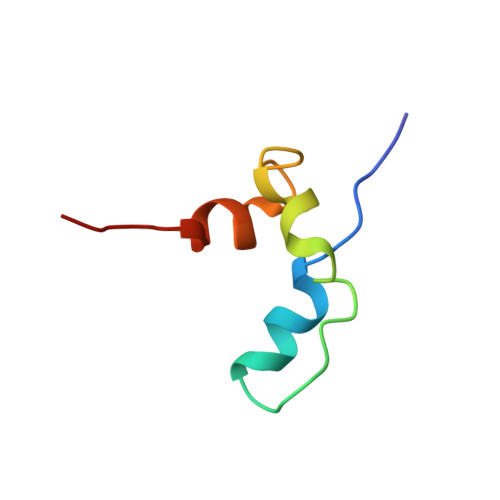The dynamic properties of a nuclear coactivator binding domain are evolutionarily conserved.
Karlsson, E., Sorgenfrei, F.A., Andersson, E., Dogan, J., Jemth, P., Chi, C.N.(2022) Commun Biol 5: 286-286
- PubMed: 35354917
- DOI: https://doi.org/10.1038/s42003-022-03217-y
- Primary Citation of Related Structures:
7OSR, 7OSW - PubMed Abstract:
Evolution of proteins is constrained by their structure and function. While there is a consensus that the plasticity of intrinsically disordered proteins relaxes the structural constraints on evolution there is a paucity of data on the molecular details of these processes. The Nuclear Coactivator Binding Domain (NCBD) from CREB-binding protein is a protein interaction domain, which contains a hydrophobic core but is not behaving as a typical globular domain, and has been described as 'molten-globule like'. The highly dynamic properties of NCBD makes it an interesting model system for evolutionary structure-function investigation of intrinsically disordered proteins. We have here compared the structure and biophysical properties of an ancient version of NCBD present in a bilaterian animal ancestor living around 600 million years ago with extant human NCBD. Using a combination of NMR spectroscopy, circular dichroism and kinetics we show that although NCBD has increased its thermodynamic stability, it has retained its dynamic biophysical properties in the ligand-free state in the evolutionary lineage leading from the last common bilaterian ancestor to humans. Our findings suggest that the dynamic properties of NCBD have been maintained by purifying selection and thus are important for its function, which includes mediating several distinct protein-protein interactions.
Organizational Affiliation:
Department of Medical Biochemistry and Microbiology, Uppsala University, BMC Box 582, SE-75123, Uppsala, Sweden.














